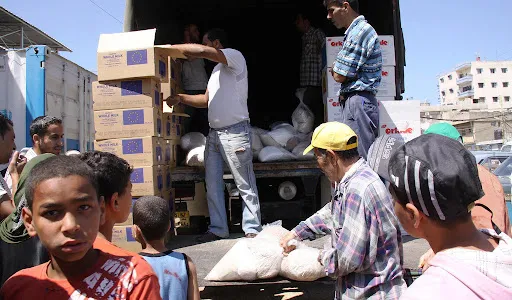Is Humanitarianism a Good Thing?
After viewing Poverty, Inc. I have a new perspective on what extreme poverty is. It is the lack of resources to a group of people, resources being education, financial opportunities, and basic needs. The most common and initial way that I viewed how to solve this concept of poverty was to give the people the things that they need however, the movie revealed to me that we are in an infinite loop. An inevitable cycle that we all create. There is a system that is already in place to which we as humans react and respond to when attempting to solve poverty which leads to the same results every time. To get people out of poverty we first must shift our own mindsets of what poverty is and what the people in poverty truly need before we can shift their mindsets.
What is the Solution?
Step one to solve poverty is to change our view of who people in poverty are. They are in need but not needy. Much like the video stated they are in need of help educationally and financially. By simply giving money and items to the people we continue to push the view of the poor being “useless” and unsustainable. To become sustainable though they need equal access to education and financial resources. One example is the movie that truly stuck with me was the TOMS example, “buy one give one.” This slogan to someone in poverty is viewed as their benign a necessary and infinite group of people who will not have shoes so they can continue to “give” shoes to people. This also opened my eyes to the truth of humanitarianism from a political and economical viewpoint. The big man with big pockets is the one who benefits from the donations and the face value that donations bring to the company without even considering the small things that they are destroying in the poverty-driven environment. It is wonderful that kids will have shoes to protect their feet thanks to TOMS however, now Joe the shoemaker and the other local shoemakers are out of a job. Why would people choose to go buy Joe’s handmade shoes when TOMS is giving shoes for free. This, in turn, destroys Joe’s flow of income and now his family, as many other local shoemakers families can no longer afford food or shelter, TOMS has unintentionally ruined a sustainable economy that was growing in the area. Instead of “buy one give one” why not buy one build one. For every shoe that is made a donation will be made to fund a building where local shoemakers can grow their businesses in the area. Another example that stuck out to me was the man who was making pineapple juice in his house with only about 4-5 employees and wanted to grow and expand his business but could not because of the tax on buying and loaning money. By taking out a loan he would just end up losing his business, resulting in his business leveling out and not having the potential to grow. Instead of giving millions of dollars to the Chiefs, I believe that to make a direct impact on extreme poverty around the world we need to offer financial opportunities to entrepreneurs. We also need to offer education on how to become an entrepreneur and how to make things that we already know how to make here. There was a woman in the video that was making necklaces for another woman and she wanted to buy a house but could not even fathom how she was going to come up with the money that she needed until the woman she worked for put into perspective that she would only need to make 200 necklaces to make the money to buy property. By teaching people in poverty how to understand the process of making money and managing it I believe that they would benefit more and grow as an individual and therefore teach others in their community to also grow and learn.
